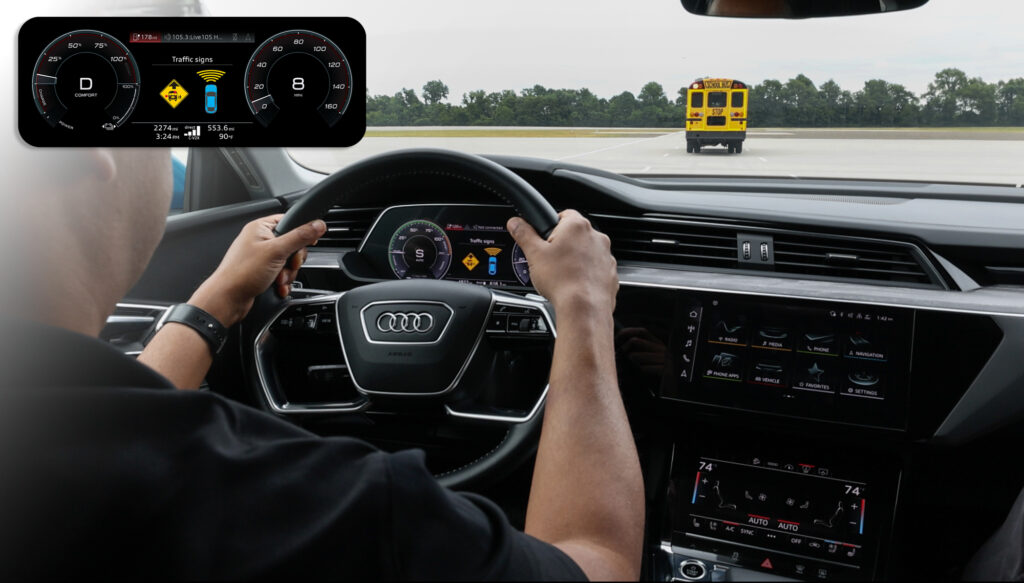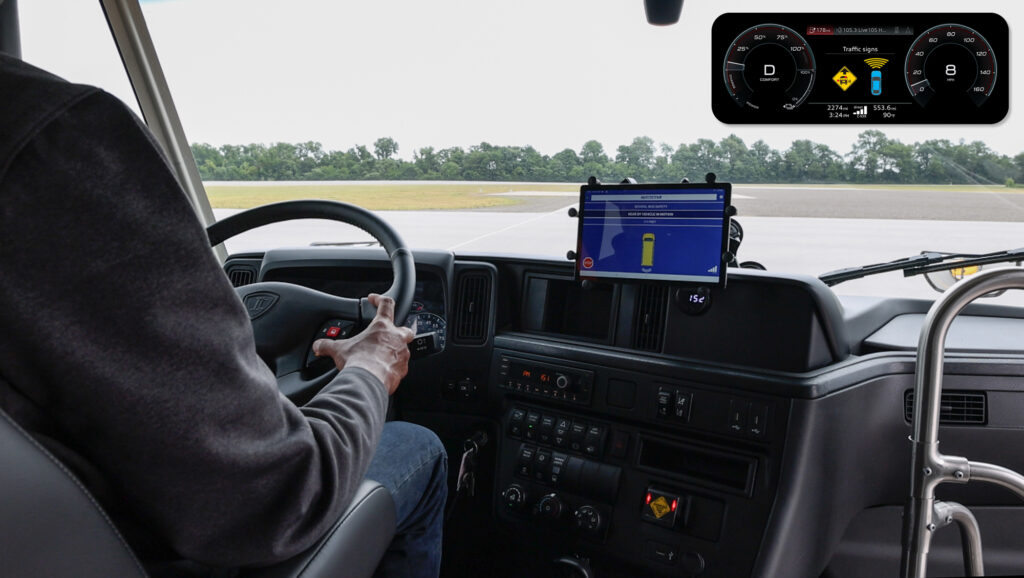
Audi, Navistar team up on bus stop safety tech
By onTechnology
Audi says it partnered with Navistar, a school bus manufacturer, on an initiative that alerts drivers when they’re approaching bus stops with the goal of preventing accidents.
The automaker said the undertaking highlights the role cellular vehicle to everything (C-V2X) technology can play in fostering safer roadways and that it can “provide potentially life-saving technology for the 26 million children riding school buses every day in the United States.”
It’s important to note that Audi has not yet deployed the technology because permission hasn’t yet been granted by the Federal Communications Commission (FCC); its work with Navistar was meant to demonstrate what C-V2X is capable of accomplishing, a spokeswoman told Repairer Driven News.
Through the C-V2X technology demonstration, Audi drivers received a direct message alert in their vehicle’s cockpit when they were approaching a school bus stop. An alert was given even if the bus itself is not visible or if the driver’s view was blocked, Audi said.

Audi’s bus stop alert is shown on its dashboard.
Navistar’s buses also received alerts to notify them that a driver was approaching, and a separate warning alert flashed if the vehicle was traveling too fast to stop, Audi said.
“This allows the school bus driver to take actions such as to not open the door or to alert the children to remain on the curb,” it said in a press release. “The end result is that it enables drivers to have additional time to prepare or react and contributes to safer transportation for school children.”
Audi added that the technology allows the vehicles to communicate 10 times per second from 400 yards, “virtually eliminating the latency inherent” to cell tower network communications.
“Each vehicle shares its location, speed, and direction with others, thereby providing more safety for all, especially when every second counts,” it said.

The system also keeps bus drivers informed by alerting them of oncoming traffic and speeding vehicles.
Audi has been championing the benefits of C-V2X technology for year and said it’s leading the way in bringing it to widespread adoption.
One of its Audi connect PRIME features, available on certain 2017 and 2018 models, enables cars to communicate with infrastructure in certain U.S. areas. It works by sending cars real-time signals from systems that monitor traffic lights via an in-cabin 4G LTE data connection. The signals provide Audi drivers with a countdown that indicates how much longer they’ll have to wait for a signal light to change.
It said it has previously used C-V2X technology within school and construction zones and added technology also has the potential to be used for detecting motorcyclists, emergency vehicles, and pedestrians.
“Direct communications technology has the potential to help save lives and provide an incredibly valuable step toward automated driving,” Audi said.
In April, Audi’s joint application with the FCC was approved, allowing it to use C-V2X technology to reduce collisions. However, it was approved under the condition applicants comply with “C-V2X operational, technical, and transition rules ultimately adopted by the Commission,” the FCC said.
Those rules have not yet been finalized. Meadows-Smith said Audi is waiting for a final rulemaking before deploying its C-V2X technology coast-to-coast.
“Combating the rising number of vulnerable road user deaths in American traffic, will require automakers and the public sector to deploy direct communication technology,” she said. “When buses and cars directly communicate with each other, we can prevent accidents and save lives. Audi has been committed over the past few years to share its knowledge with local and state DOTs, as well as relevant federal agencies to begin building this ecosystem.
“We believe this technology – and its ability to see dangers not visible to drivers – will be key to unlock the next substantial improvements to road safety and provide an incredibly valuable step toward automated driving.”
Audi and co-applicants — including Ford, and Jaguar Land Rover — can use the technology in a spectrum of the 5.9 GHz band, which allows vehicles to communicate with each other, pedestrians, and nearby infrastructure.
The National Highway Transportation Safety Administration (NHTSA) has estimated that safety applications enabled by connected vehicle technologies could eliminate or mitigate the severity of up to 80% of non-impaired crashes.
Images
All images courtesy of Audi
